July 21 – day 13 – the real pingo
Another hot and cloudless morning – who would have thought the tundra such an oven? We roll out on the river by 9am as it seems a trifle cooler on the water. A large sandy island dominates this stretch of river and the river is shallow. We opt for the north channel as more current seems to flow down this branch. The shoreline, like the bottom, is red hued gravel. With clear and shallow water, the bottom of the river flies by. I keep an eye out for fish – a red throated loon, dipping and diving, keeps pace with the canoes.
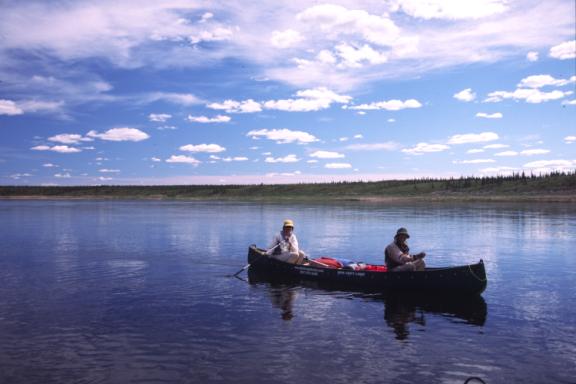
In some places the river bank has eroded away, dripping permafrost melts directly into the river. Again, it’s a birders paradise: mergansers, Canada geese, loons and terns mix and mingle. A shade seeking peregrine darts out from a small overhang then skims away over the tundra.
We easily locate the official pingo campsite on the north side of the river, well marked with recent tent rock circles. Today was only 3 hours paddling (and hardly paddling!) before the tundra tunnel goes up, lunch is eaten and off we go to see the real pingo. The land here is much drier, flatter and with fewer willows to crash through than yesterday’s inspection. I’m glad for that, as between the bugs, heat of the day, and challenging walking, today’s destination is an easy stroll.
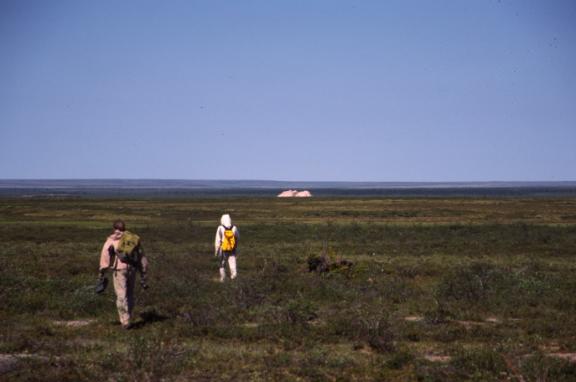
The pingo is not visible from the river campsite but after ascending the first ridge, it is visible in the distance, perhaps 3 km away. Pelly refers to it as ‘Muskox Hill’ but we don’t see any musk ox. From this distance, it looks like a white pimple which has erupted from a green pocket.
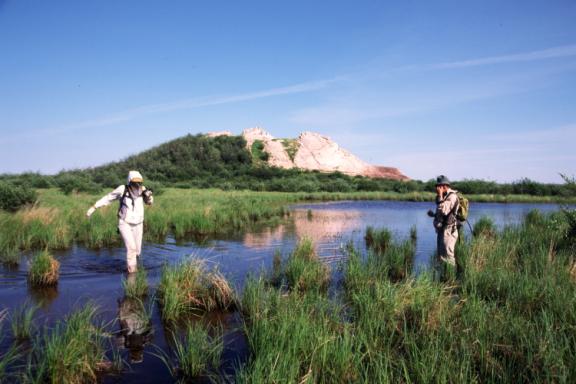
Then the walking gets wet. A boggy moat surrounds the pingo, and I’m not keen on wading knee deep in squishy bottom muck. A remnant from the original Thelon river, I speculate, now filled with spring melt water. Oddly enough, Ron startles a pike, or some such long narrow fish, which was hiding in the tall water grasses. Northern phalaropes flit about and yellow legs also make a racket.
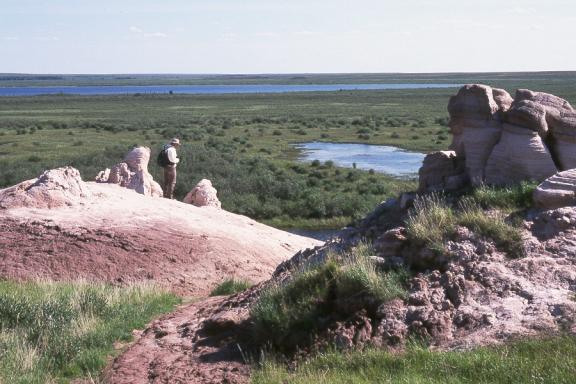
Finally pushing through the last set of head tall willows, we scramble up the pingo’s pink rilled sides. What a fine view! The Thelon, a blue slash in the distance, the tundra spread like a carpet before us. Caribou tracks criss cross the pingo, trying to catch a breeze to escape the bugs.
Families of siksik pop in and out of their holes, checking us out. Cute but somewhat camera shy, Ron has a lot of patience to capture them on film. (yes, pre digital age). I inspect the folds and wind sculpted hoodoo that top the pingo. There are no footsteps on top except for the ones we leave, the wind completely erasing traces of past visitors.
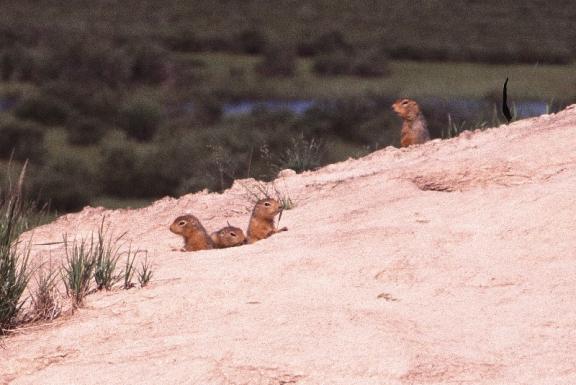
We linger, each to their own pleasures. A gusty hot wind keeps the blackflies down at ground level but is not enough to discourage the large bull flies from opportunistic attacks. After an hour or so, we descend Muskox hill, satisfied.
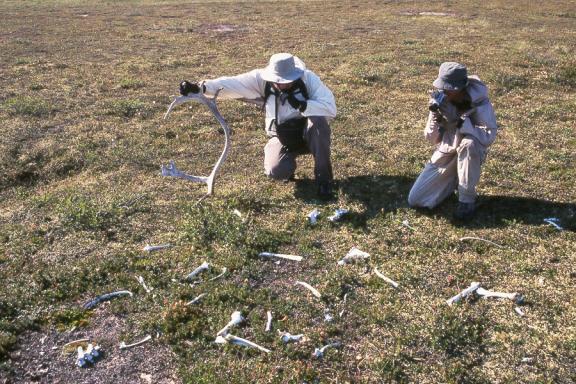
The 2 hour return to camp is much the same: wet then dry. We come across a fairly complete caribou skeleton. Bones strewn about, marvelously bleached white by the sun compete with nearby wolf turds, some as large as the bones consumed, also white and sun bleached.
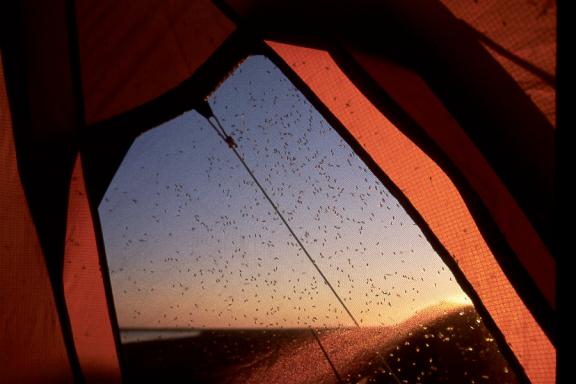
After dinner, as the temperature drops, I attempt a stroll outside along the river. The pinging of black flies against the hood of the bug jacket drives me back inside. This campsite is the worst so far for bugs. Like a blood thirsty giant killer, I relish the squeak their little bodies make when smeared against the nylon tent, hunting down each and every last one before crawling into my sleeping bag.